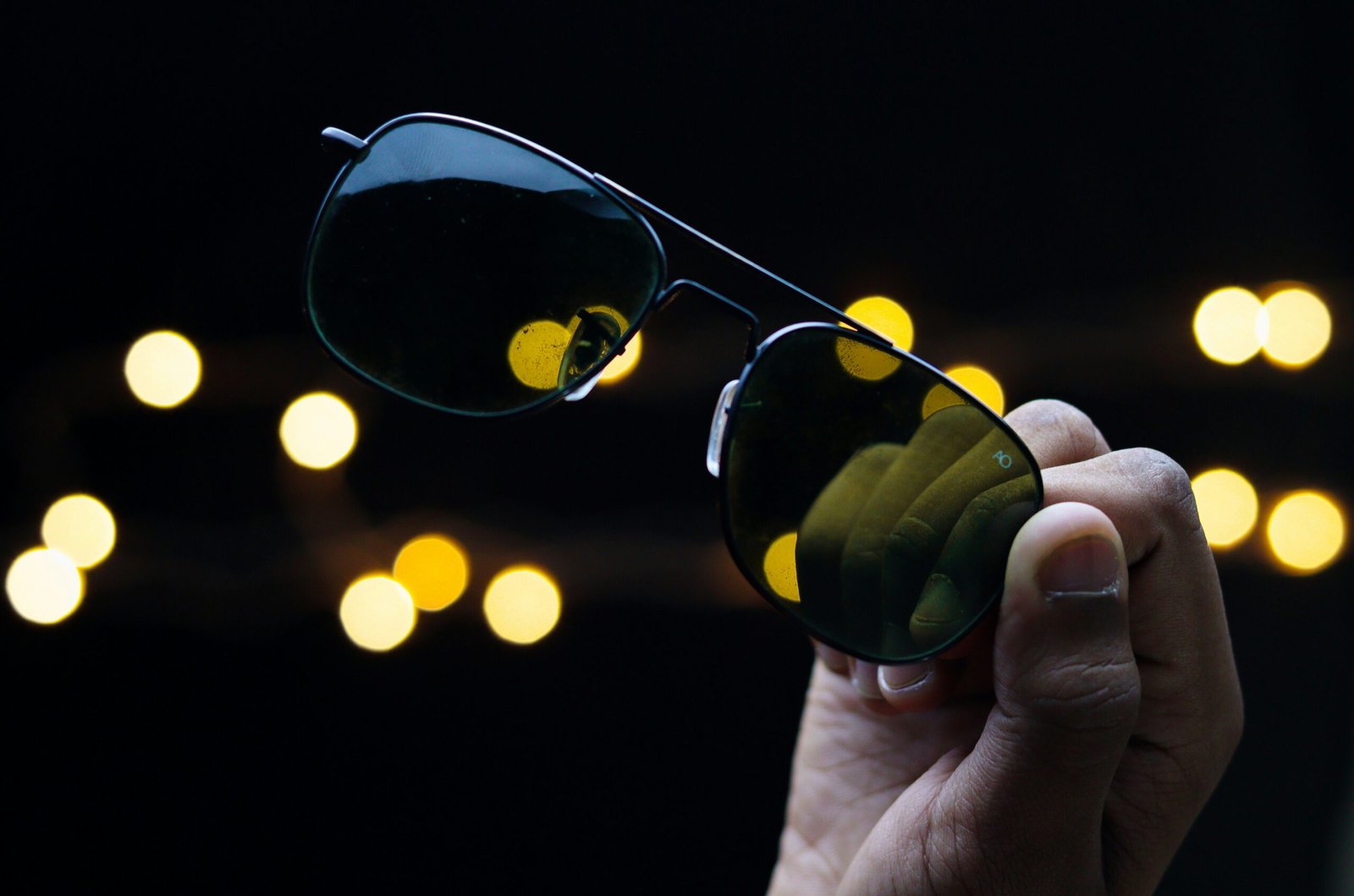A Glimpse into the Past: The Birth of Eyeglasses
The history of eyeglasses is a remarkable journey that traces back to the late 13th century in Italy. During this time, the need for vision correction became increasingly apparent, particularly among the aging population, who faced challenges in maintaining clear eyesight. The advent of eyeglasses marked a pivotal moment in the quest for clearer vision, addressing a critical need that had long been overlooked.
The earliest forms of eyeglasses can be attributed to the innovative spirit of that era, as individuals sought solutions to common vision problems. The first lenses were crafted from simple yet effective materials like polished crystal or quartz, demonstrating an early understanding of optical principles. These rudimentary lenses were designed to be held in hand, serving as magnifying devices to aid reading and other close-up tasks. The ingenuity of these early artisans laid the groundwork for future advancements in eyewear technology.
The evolution of eyeglasses soon gained popularity throughout Europe, extending beyond Italy. By the 14th century, these vision correction tools began to gain acceptance, leading to the development of wearable frames that held the lenses in place, thereby enhancing convenience and accessibility. This innovation encouraged a broader segment of the population to utilize eyeglasses, as it eliminated the need for continuous manual adjustment of the lenses.
Over the centuries, the design and functionality of eyeglasses underwent significant transformations, driven by advancements in lenses and frames. The emergence of new materials and manufacturing techniques allowed for greater customization, accommodating various vision impairments. The invention of eyeglasses can be seen as not only a functional solution but also a reflection of society’s changing attitudes toward vision correction and personal appearance.
The Evolution of Lens Technology
The history of lens technology is marked by significant advancements that have played a crucial role in vision correction. The journey began as early as the first century AD with the use of rudimentary glass lenses, often made from simple magnifying glasses. These basic optical devices, primarily crafted from quartz or polished crystal, were effective but limited in scope. They primarily addressed far-sightedness, leaving many vision problems inadequately managed during this early period.
As centuries passed, the understanding of optics advanced, and so did the crafting of lenses. The 13th century witnessed the emergence of spectacles in Italy, where glassblowers began to shape and enhance lenses for more refined vision correction. These initial spectacles were rudimentary as well, but they laid the groundwork for future improvements. By the 18th century, the introduction of bifocal lenses, famously attributed to Benjamin Franklin, marked a pivotal development. These lenses incorporated two distinct optical powers, catering to both nearsightedness and farsightedness, thus revolutionizing how individuals addressed multiple vision issues without changing their eyewear.
In the 19th century, the industrial revolution brought further improvements. Achievements in glass manufacturing techniques resulted in the creation of lighter and more durable lenses, which not only enhanced comfort but also broad accessibility. The transition from glass to plastic lenses in the mid-20th century marked yet another revolutionary leap. Plastic lenses were significantly lighter, shatter-resistant, and could be produced to accommodate diverse prescriptions with greater effectiveness.
In contemporary times, advancements include the development of specialized lenses, such as progressive lenses that offer a smooth transition between different optical strengths, and lenses with anti-reflective coatings that enhance visual clarity. These innovations have significantly improved the quality of life for individuals with various vision impairments, allowing for greater comfort and ease in daily activities. The continuous evolution of lens technology illustrates a remarkable journey in meeting the diverse needs of vision correction.
Eyeglasses in Society: Acceptance and Fashion
The journey of eyeglasses from mere instruments of vision correction to esteemed fashion accessories reflects a broader evolution in societal attitudes. Initially, eyeglasses were often stigmatized, associated with frailty or old age. In the early periods of their use, individuals who relied on glasses faced social challenges as a result of misconceptions regarding their appearance and capabilities. Popular culture, too, played a role in cementing these preconceived notions, with early portrayals in literature and theater often painting glasses wearers as eccentric or scholarly figures, further entrenching the stigma surrounding vision correction.
The Science Behind Vision: Understanding Refractive Errors
Vision is a complex process that relies on the delicate interplay between light, the eye, and the brain. As light enters the eye, it passes through the cornea and lens, which bend or refract the light to focus it onto the retina. However, when the shape of the eye varies from the ideal structure, refractive errors can occur, resulting in blurred vision. The most common types of refractive errors include myopia, hyperopia, astigmatism, and presbyopia.
Myopia, or nearsightedness, is a condition where distant objects appear blurry while close objects can be seen clearly. This condition often arises when the eyeball is too long, causing light rays to focus in front of the retina rather than directly on it. Conversely, hyperopia, or farsightedness, occurs when the eyeball is too short, leading to difficulty focusing on nearby objects, as light rays converge behind the retina.
Astigmatism is a type of refractive error caused by an irregular shape of the cornea or lens, resulting in distorted or blurred vision at all distances. This condition happens when light rays come to multiple focal points, making it challenging for the brain to interpret the incoming image correctly. Lastly, presbyopia is an age-related condition that affects nearly everyone as they grow older. It is characterized by a gradual loss of the eye’s ability to focus on close objects due to a decrease in the elasticity of the lens.
Corrective lenses, such as eyeglasses and contact lenses, are pivotal in compensating for these refractive errors. By altering the path of incoming light, lenses assist in ensuring that light focuses directly on the retina. This precisely calibrated interaction between the lenses and the eye illustrates why eyeglasses are not merely fashion accessories but essential tools for many individuals looking to restore clear vision.
Pioneering Figures in Eyewear History
The journey of eyeglasses is marked by several pivotal figures whose innovations and insights have significantly shaped the way we perceive visual aid. One of the earliest documented individuals associated with spectacles is Alessandro di Spina, an Italian monk from the 13th century. He is often credited with conceptualizing the first pair of eyeglasses, utilizing convex lenses to assist with near vision. This invention was a groundbreaking advancement, setting the foundation for future optical developments.
Another key figure is Giovanni Battista della Porta, a Renaissance polymath whose work in lenses and optics contributed immensely to the understanding of vision correction. In the 16th century, della Porta not only applied scientific principles to the design of eyeglasses but also popularized their use, making them more widely accepted in society. His writings encouraged further exploration into optical science and paved the way for subsequent inventors.
As we moved into the 18th century, Benjamin Franklin emerged as another significant influence in eyewear history. He invented bifocals, a transformative design that allowed individuals to see both near and far without changing lenses. Franklin’s practical approach to vision correction resonated deeply with the public, highlighting the functionality of eyewear and its necessity for an increasingly literate society.
In the 19th century, John E. M. P. Allen further innovated by introducing the use of lightweight materials and stylish frames. His ideation of combining comfort with aesthetics led to a broader acceptance of eyewear as a fashion accessory rather than merely a tool for vision correction. The evolution of eyeglasses can thus be seen as not just a quest for improved sight but also a reflection of changing societal attitudes towards personal expression and style.
The Cultural Impact of Eyeglasses
Eyeglasses have had a profound cultural impact throughout history, extending far beyond their functional purpose of aiding vision correction. They have become emblematic of various societal attributes, including intelligence, professionalism, and even eccentricity. This transformation in symbolism can be traced through numerous art forms, literature, and cinema, shaping perceptions of people who wear them.
In literature, characters who don spectacles are often depicted as more knowledgeable or introspective, reinforcing the stereotype that glasses wearers possess a higher intellectual capacity. Icons such as Harry Potter and Sherlock Holmes have cemented this association, making eyeglasses synonymous with wisdom and wit. Literary works have employed eyeglasses as a motif to highlight the contrast between the ordinary and the extraordinary, illustrating how vision correction can also serve as a metaphor for clarity of thought.
Moreover, the representation of eyeglasses in visual arts reveals their multifaceted role in cultural contexts. Paintings from the Renaissance era often feature scholars and philosophers adorned with glasses, signifying their pursuit of knowledge and enlightenment. In contemporary art, however, the portrayal of eyewear has diversified, sometimes symbolizing individuality and creativity rather than merely intelligence. Eyeglasses have thus evolved from a marker of scholarly pursuit to a symbol of personal style.
In cinema, the evolution of eyeglass symbolism is particularly noteworthy. Characters ranging from the bumbling professor to the suave secret agent have sported glasses, each contributing to the narrative in their own way. Modern films have played with the notion of eyewear, enabling characters to transcend stereotypes and defy expectations. For instance, the portrayal of eccentric characters wearing oversized or unique glasses often insinuates a complex personality filled with creativity and quirkiness.
Overall, the cultural impact of eyeglasses reflects the dynamic interplay between fashion, personal identity, and societal norms. While they serve as practical tools for vision correction, their rich symbolism in various art forms continues to shape our understanding and appreciation of those who wear them.
Modern Eyeglasses: Technology Meets Fashion
In recent years, the evolution of eyeglasses has been profoundly influenced by technological advancements, transforming not just their functionality but also their aesthetic appeal. One of the most significant innovations is the introduction of blue light-blocking lenses. With the rise of digital screens, concerns over eye strain and discomfort have grown, leading to a demand for lenses designed specifically to filter harmful blue light emitted from devices. These lenses provide users with crucial protection, thereby enhancing visual comfort during prolonged screen time.
Furthermore, 3D printing technology has revolutionized lens and frame manufacturing. This technique allows for customized eyewear solutions that fit the unique contours of the individual’s face. As a result, wearers benefit from increased comfort and a personalized fit, catering not only to corrective needs but also showcasing unique styles. Businesses leveraging 3D printing can manufacture lightweight frames with intricate designs, promoting both utility and fashion within the realm of eyewear.
Another notable innovation in the eyeglass market is the emergence of smart glasses. These devices integrate technology directly into the eyewear, offering functionalities such as augmented reality, voice control, and connectivity with other smart devices. Smart glasses have the potential to reshape daily activities, providing users with hands-free access to information. As this technology continues to evolve, it fosters creativity in eyewear design, merging utility with contemporary fashion trends.
Current trends in eyewear reflect not only advancements in technology but also the desire for self-expression. Fashion-forward designs include bold colors, unique shapes, and sustainable materials that resonate with modern consumers. Ultimately, today’s eyeglasses are a harmonious blend of innovation and individual style, enhancing vision correction while allowing wearers to make a fashion statement.
Challenges and Myths Surrounding Vision Correction
Vision correction, primarily through the use of eyeglasses, has often been shrouded in misconceptions that can lead to misunderstandings about eye health. One of the most pervasive myths is that wearing glasses can weaken the eyes. This notion is misleading; corrective lenses are designed to aid individuals in seeing clearly and do not cause deterioration of vision. In fact, failing to correct vision problems may lead to additional eye strain and discomfort, emphasizing the need for proper eye care.
Another common belief is that only individuals with severe vision impairment require eyeglasses. However, vision correction is beneficial for a wide range of eyesight issues, including mild nearsightedness and astigmatism. Many people may feel reluctant to wear glasses because they believe that they should only be used in extreme cases. This belief can discourage early intervention and may contribute to a decline in overall eye health if corrective measures are delayed.
Societal perceptions also play a significant role in how individuals approach vision correction. Some people may feel embarrassed or stigmatized when wearing glasses, associating them with unappealing stereotypes. This societal pressure can lead to reluctance in seeking necessary vision correction. Furthermore, the advent of contact lenses and laser eye surgery may create a misconception that eyeglasses are an outdated solution. While these alternatives are available, eyeglasses provide a level of convenience and accessibility that cannot be overlooked. They require no maintenance beyond occasional cleaning and can offer a unique fashion statement in addition to their functional benefits.
As we continue to confront such myths and challenges, it is crucial to foster a better understanding of the importance of vision correction. Encouraging open discussions and providing education on eye health will help dispel these misconceptions and promote a culture that accepts and values the use of corrective lenses.
Future Outlook: The Next Generation of Vision Correction
As we look ahead into the future of vision correction, it becomes evident that technological advancements will play a critical role in shaping how we approach ocular health. Traditional eyeglasses and contact lenses have served as the primary means of vision correction for decades; however, the emergence of innovative alternatives is set to revolutionize this field. Laser eye surgery, for instance, continues to advance, with procedures becoming increasingly precise and less invasive. Techniques such as LASIK and SMILE (Small Incision Lenticule Extraction) are gaining popularity not only for their effectiveness in treating common refractive errors but also for their quick recovery times and improved safety profiles.
In addition to surgical options, the integration of digital technology into vision correction is beginning to take shape. Smart glasses equipped with augmented reality (AR) capabilities may soon provide wearers with adjustable vision settings, enhancing their ability to see varying distances without the need for multiple pairs of glasses. Furthermore, there is ongoing research into the development of advanced contact lenses that can actively correct vision in real-time, adapting to environmental changes, and possibly even delivering medications directly to the eye.
The future of ocular health technology does not solely lie in devices and procedures. The conception of personalized vision care that utilizes data and artificial intelligence (AI) promises to tailor vision correction strategies to individual needs. Predictive analytics could, for instance, help identify potential vision problems earlier, enabling proactive treatment options that enhance overall eye health.
As these innovations take root, we can envision a society where traditional methods of vision correction are complemented or even supplanted by state-of-the-art alternatives. The evolution of vision care is an exciting journey that challenges our understanding of how we perceive the world, urging us to consider the possibilities that lie ahead.



